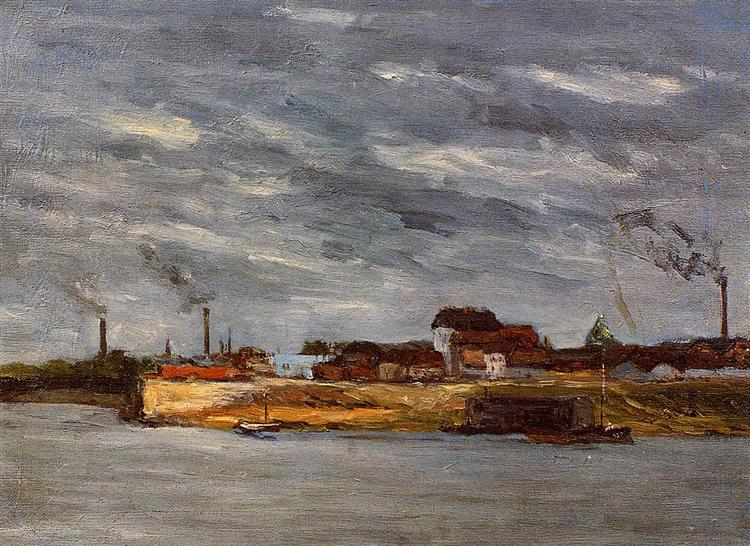Beskrivelse
"Port de Javel", painted by Paul Gauguin in 1876, is a stunning testament to the early years of this artist who was later recognized as a central figure in Symbolism and Post-Impressionism. In this work, Gauguin uses a harbor scene as a vehicle to explore the interaction between nature and human life. The work is a vibrant depiction of the banks of the Seine, where the port served as a key point of commercial activity at the time.
Compositionally, the painting is balanced in its arrangement, with the horizon in the upper third, allowing the water area – a deep blue resonating with green hues – to occupy a significant portion of the canvas. This use of space reflects an affinity with naturalism, although the colour palette progressively moved away from impressionism towards a more personal and expressive approach. In the lower part of the painting, a series of boats, each outlined with a loose stroke, evoke the movement and life that defines the scene, capturing the constant bustle of the harbour.
The use of colour in Port de Javel is notable for its exploratory attitude. Gauguin chooses saturated tones that bring the water's surface and the boats to life, creating a contrast between the energy of human activities and the calm of the surrounding landscape. This choice of colour not only marks Gauguin's transition towards a more personal style, anticipating the use of intense colours that would characterise his work later on, but also offers a sense of depth and luminosity that transforms an everyday moment into something poetic.
As for the characters, the work features a multitude of figures who seem to be engaged in the task of loading and unloading goods, suggesting a breathing human ecosystem on the banks of the Seine. However, these figures are depicted somewhat schematically, allowing the landscape and atmosphere of the port to become the real protagonist. This stylistic choice is emblematic of one of Gauguin’s early stages, where he leans towards symbolism in capturing the spirit of the place rather than the precise details.
"Port de Javel" can be seen as a precursor to the themes that Gauguin would explore later in his career, especially during his time in Tahiti. The work, like many of his early pieces, manifests a palpable restlessness to escape the confines of realism, prefiguring his search for emotional essence through the visual.
By examining this painting, the viewer not only has the opportunity to appreciate Gauguin's technical prowess, but also to glimpse the evolution of his artistic thinking. As diverse currents such as Impressionism and Symbolism intertwine in his work, "Port de Javel" stands as a beacon pointing the way to his future exploration of form, color, and emotional expression. These elements make the work a fundamental piece for understanding the artist's career, as well as his impact on the development of modern art.
KUADROS ©, a famous painting on your wall.
Hand-made oil painting reproductions, with the quality of professional artists and the distinctive seal of KUADROS ©.
Painting reproduction service with satisfaction guarantee. If you are not completely satisfied with the replica of your painting, we will refund 100% of your money.

